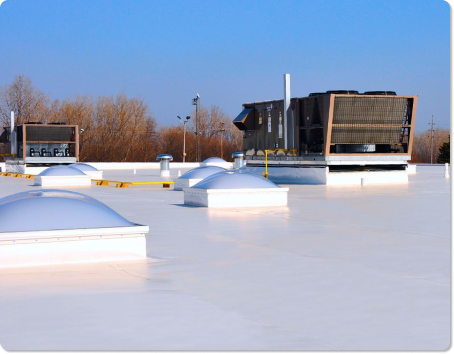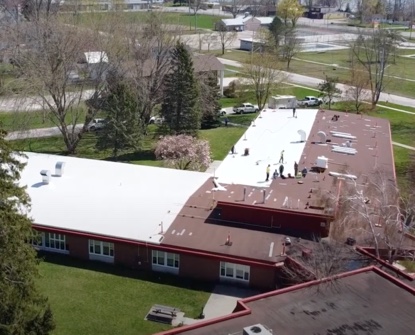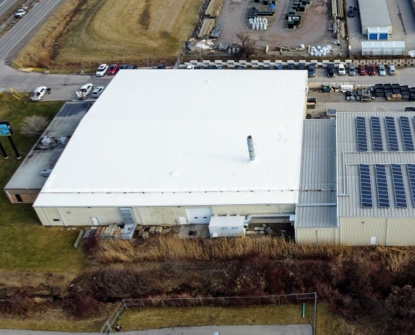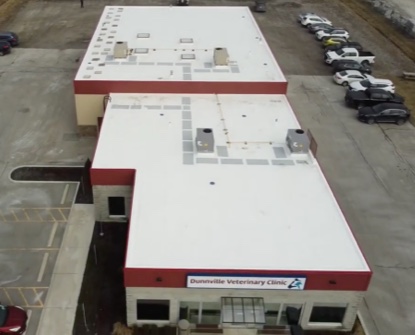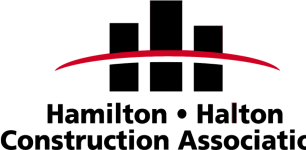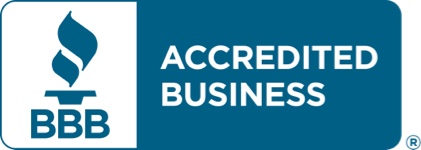-
Great experience - everything about their roof system was well explained, price was very competitive and the work was done on schedule with a great crew - what more could you ask for?
M. B.
-
After doing a lot of research on possible solutions for renewing an existing 35yr old low pitch corrugated metal roof on a pre-eng industrial building; a membrane overlay system was chosen as the most effective from a performance, cost and warranty standpoint. After engaging 3 local firms for proposals, it quickly became apparent that Watertite was by far the best solution to meet our needs. Their rep (Zak) was very easy to work with, maintained great communications, and was very professional/responsive to any questions or communications I had. Through the whole process (survey, quotation, project coordination/execution, and wrap-up), Watertite and their personnel were top notch with little inconvenience to the tenant. Definitely would not hesitate to highly recommend Watertite and the Duro-last membrane system.
Dave Allan
-
We did our due diligence on roofers when we needed a complete new 15,000 square foot flat roof. All signs were positive for Watertite and they did not disappoint us, they did a great job. Zack was our main contact and he kept us informed throughout the project and always returned our calls in a timely fashion. Well done Watertite team! Larry Fontaine, president of Fontaine Transport Inc.
Barb Fontaine
-
It's great to see local businesses such as Watertite Roofing - Specialists in Flat Roofing actively participating and helping the local community. Thank-you so much for your support this year at our BMX race track. We all do it for the kids!
FALLS BMX PARK (Falls BMX Park)
-
There’s a reason the Watertite team consistently receives glowing reviews & is a highly rated Better Business Bureau member - such standing can only be earned - by consistently delivering a high-quality service & customer experience. To start, Zak prepared a detailed quote that included photos & clearly outlined what needed to be done & why. Thereafter, Zak dispatched a highly skilled, professional team to make the much-needed repairs. Thank you Zak & team - you are a credit to your profession! In an industry fraught with unscrupulous characters, it’s a comfort knowing the Watertite team’s business model subscribes to such old-fashioned values as honesty, integrity, quality, & doing what they committed to do. Better Business Bureau membership is a key differentiator in an industry that lacks governance, oversight & consumer protection enforcement.
C Prescott
-
Great responsiveness, good value and no hidden costs. Would not hesitate to recommend this company to anyone needing roof work. Chris Elgar of C Elgar Holdings Limited.
Chris Elgar
-
5 Stars for commercial flat roofing in Haldimand and Niagara
Myron Myslowka
-
Our church (Port Colborne BIC Church Port Colborne Ontario) contracted Watertite Roofing to install new roofing on our flatroof here at the church. We are so very pleased with the job... well done...professional...tidy...exceptional workmanship...thorough...and wonderful to work with from beginning to completion. Five stars for a job well done.
Brian Lofthouse
-
The crew from Watertite Roofing did and amazing job. They were professional and friendly and worked hard to get the job done. Quality of work was fantastic. It even cost less than originally quoted and appreciated the honesty. Highly recommend this company.
J. W.
-
The Optimist Club of Dunnville has worked with Watertite over the years. Recently, we contracted them to install a Duro-Last overlay roof system on the flat roof over our kitchen and back storage area. We were very pleased with the job. They noted a minor concern on a roof on which they were not working and repaired it at no extra charge. The team from - the quote, to the installation, to the office payment was friendly and professional. Installation of this durable, well-warrantied roofing allows us to focus our time and energy on our mission with the youth rather than worrying about leaking roof. Kudos to the Watertite team!
Brenda Zynomirski
-
Zak at Watertite was fantastic! Called him up to get a quote and was very happy with the responsiveness. The work was completed as promised and in a very professional. Would definitely recommend them for any roofing needs.
D. B.
-
We hired Watertite Roofing to repair a leaking flat overhang on the front of our house that had been poorly done by another roofing company about 10 years earlier. Rot had set in and owner Zak Keyes had the solution for a permanent fix. Lead hand Jon took over from there and skillfully directed his crew to undo all the damage, working tirelessly in cold weather to give us a house that looks great and the knowledge that the problems are fixed for good. We highly recommend Watertite Roofing for flat roof construction and repair. Leanne and Pierre – Hamilton Ontario
Leanne Joanisse
-
Well, we started by looking for an award-winning roofing material that could withstand the harsh Canadian weather. Then we discover Dura-Last – the most advanced vinyl roofing material ever developed. In so doing we also discovered an award winning flat roofing installer, even recommended by Dura-Last themselves. Turns out Watertite Roofing is the best flat roofing installer in Canada, serving right here in Southern Ontario. Went to their office, and I couldn't believe the number of awards that they have received. Hall walls full of awards. Nobody gets that many awards unless you're real good. So we not only get an Award winning product to protect our commercial investment, but we get the award-winning installers to boot. Don't gamble with your commercial properties - Watertite Roofing; the flat roofing specialists.
Don Cormier
-
Zac and his team have been incredible from our first contact. They were the most reasonably priced of 4 quotes, got the job done quickly when they said they would, have promptly responded to any queries and have came back to support installation of ventwork during renovations. The new roof, trim and eaves troughs look great and we're very happy with the service.
Amanda Harry
-
Watertite did an amazing job with our rooftop terrace installation, very professional and built to last many years. I would recommend them to anyone looking for a solution that is long lasting and low maintenance. Amazing job!
Glenn Edwards
 With an
A+ rating, the Watertite Roofing - Specialist in Flat Roofing, with over 50 years of experience, lead in the installation, repair, replacement, retrofit, and maintenance of commercial, institutional, and industrial flat roofs. Serving Southern Ontario areas including Hamilton, Mississauga, Burlington, Etobicoke, Niagara Falls, and St. Catharines, we tailor solutions for every flat roofing challenge, focusing on delivering waterproof, durable results that protect buildings, businesses, and properties.
With an
A+ rating, the Watertite Roofing - Specialist in Flat Roofing, with over 50 years of experience, lead in the installation, repair, replacement, retrofit, and maintenance of commercial, institutional, and industrial flat roofs. Serving Southern Ontario areas including Hamilton, Mississauga, Burlington, Etobicoke, Niagara Falls, and St. Catharines, we tailor solutions for every flat roofing challenge, focusing on delivering waterproof, durable results that protect buildings, businesses, and properties.